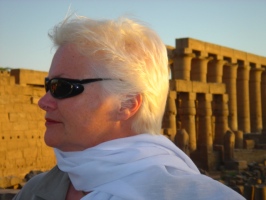Public drinking fountains in the form of small cast-iron sculptures are scattered throughout Paris. They are “Wallace fountains,” named after Richard Wallace, an Englishman who was raised in Paris by his grandmother. Wallace designed and financed the fountains’ construction, installing them after the Franco-Prussion War (1870-71).
The siege of Paris and the Commune destroyed many aqueducts in the 1870s. The poor were unable to get water without having to pay a lot for it. Richard Wallace inherited a large fortune from his father in 1870, so he decided to help all Parisians.Â

After sketching up his own designs, Wallace commissioned Nantes sculptor Charles-Auguste Lebourg to finish the fountains’ artwork. The roof of each fountain is supported by four goddesses (or nymphs or caryatids): Simplicity, Temperance, Charity, and Goodness.
There were 50 original Wallace fountains of the large design, and the city of Paris added 36 more. Paris donated one of the fountains to Montreal (see image below at right), and there are other Wallace fountains throughout France and around the world, including in Amman, Jordan and in New Orleans.
The fountains are turned off November to February, are repainted every two years, and are still a source of free water for homeless people, the sans domicile fixe (“without a fixed home”) or SDF. Cups on chains were removed in 1952.
Wallace is buried in the sprawling Pere Lachaise cemetery in Paris. I haven’t checked to see if there’s a fountain on his grave.






One Comment